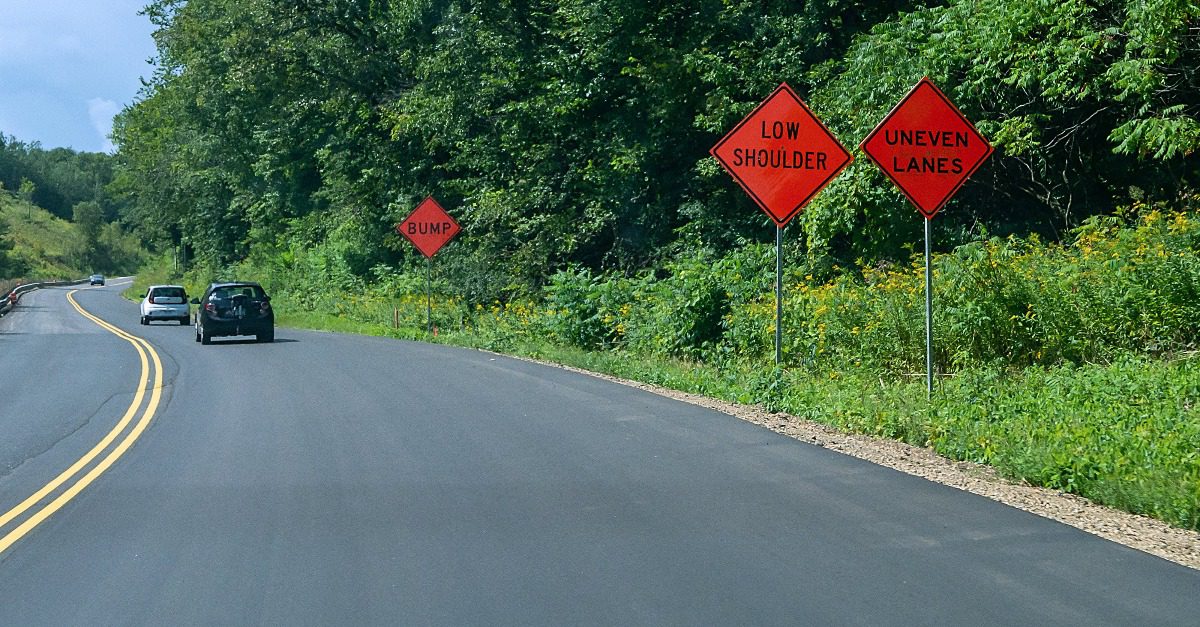Mill & Overlay

,
As pavement applications for roadways reach the latter stages of their lifecycle, a “mill and overlay” operation is often utilized to remove a top layer of old asphalt and replace it with a new wearing course. For multi-lane highways, this operation may involve milling one lane of pavement at a time, creating an “uneven lanes” situation where the milled lane exists at a slightly lower elevation than an adjacent lane that has not yet been milled. Though this situation is not hazardous for typical passenger vehicles when kept to a reasonable depth, the rounded wheels of single‑tracked vehicles such as motorcycles and bicycles do have trouble mounting the exposed lip between these lanes if the vehicle changes lanes across the surface of this lip. Consider the following from the Guidelines on Motorcycle and Bicycle Work Zone Safety produced for the Federal Highway Administration (FHWA):
Milling, asphalt paving, and other work activities can create a height difference between adjacent lanes. Whereas automobiles can generally maintain control when crossing lanes that differ in height as much as 2 to 3 inches, motorcycles and bicycles have difficulties crossing uneven lanes that differ as little as 1 inch in height. Abrupt changes in height (i.e., with a near vertical lip) are particularly challenging to transverse and can lead to a loss of control.
This milling operation creates a distinct hazard to motorcycles and bicycles when the milled lane is left without replacement asphalt for a period when it will be exposed to traffic. Roadway users, (especially motorcyclists and bicyclists) should therefore be warned of the uneven lanes. Though the FHWA Manual on Uniform Traffic Control Devices for Streets and Highways (MUTCD) does not specifically require the use of “UNEVEN LANES” signs, guidance in §6F.45 of the MUTCD states that this sign “should be used during operations that create a difference in elevation between adjacent lanes that are open to travel.” It is also good practice to pair this sign with a motorcycle plaque, or to utilize a dynamic message sign to advise that motorcyclists should stay in their lane through the construction zone.
Categories: Civil Engineering | Premise Liability


